Key takeaways
- A portfolio website is a crucial reflection of your skills and personal brand, serving as a storytelling platform for your creative journey.
- Wix offers an intuitive, user-friendly approach to website building, allowing for easy customization without coding knowledge.
- Effective content preparation is essential; focus on clarity and select key projects that represent your style and skills.
- Incorporating interactive features and maintaining website updates can enhance visitor engagement and improve the overall user experience.

Understanding Portfolio Websites
A portfolio website is more than just a digital space to showcase your work—it’s a reflection of your skills, personality, and professional journey. I remember feeling both excited and nervous when I first created mine; it felt like putting a piece of myself out into the world for judgment. Have you ever wondered how a simple website can convey so much about who you are as a creator?
For me, understanding what a portfolio website truly represents helped shape its design and content. It’s not just about uploading projects but telling a story through visuals, descriptions, and organization. What projects should you highlight to make the strongest impression? This question guided me to choose carefully and curate my best work.
Ultimately, a portfolio website acts as a conversation starter between you and potential clients or employers. It’s a place where your creativity meets opportunity, inviting others to explore what you bring to the table. I found that thinking of my portfolio as a personal brand rather than just a collection of work changed how I approached building it.
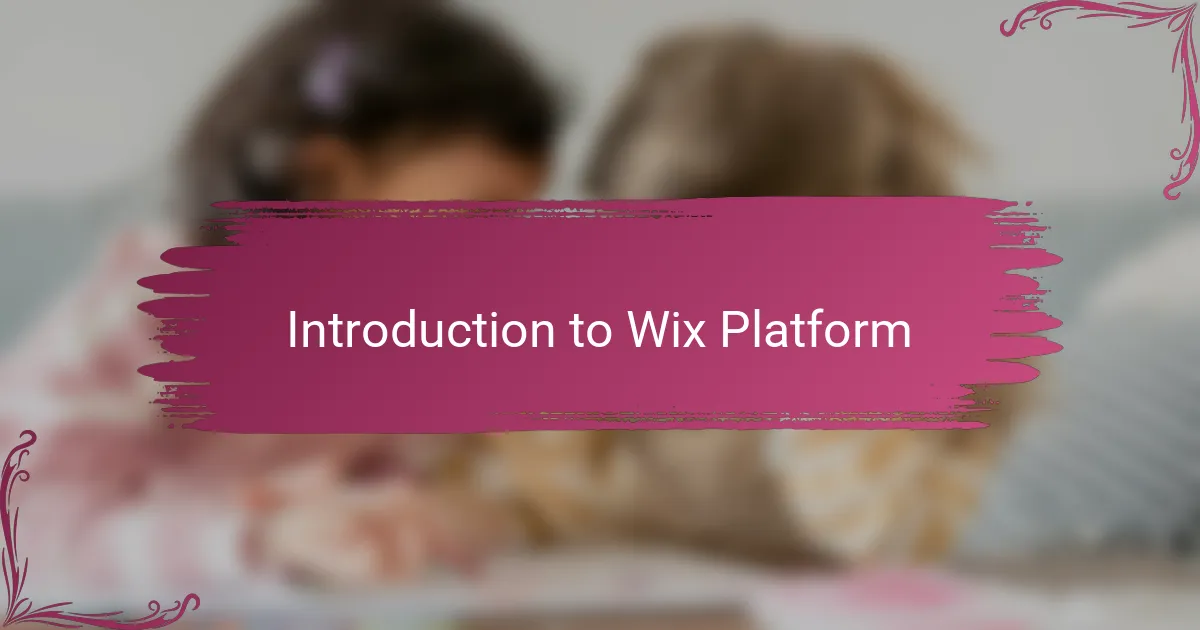
Introduction to Wix Platform
Wix is a website-building platform that instantly caught my attention because of its simplicity and flexibility. When I first explored it, I appreciated how it makes web design accessible, even if you don’t have a background in coding. Have you ever wanted to build something professional without getting lost in technical details? That’s exactly what Wix offers.
What impressed me most was the drag-and-drop editor that lets you customize every element with ease. It felt empowering to see my ideas come to life without needing to write a single line of code. At the same time, Wix provides advanced features for those who want more control, which means it can grow with your skills.
From templates tailored for portfolios to built-in SEO tools, Wix seemed like a tool built with creators in mind. I realized it wasn’t just about making a website quickly; it was about crafting an online space that could truly reflect my style and professionalism. Have you ever stumbled upon a platform that fits your workflow so well it almost feels like it was made for you? That was my experience with Wix.

Preparing Content for Your Website
Getting the content ready for your portfolio website is a step that I can’t stress enough. I found myself spending more time here than I expected because I wanted every word and image to tell my story accurately. Have you ever tried to capture years of work and growth in just a few sentences? It’s challenging but rewarding.
One thing I learned is that clarity matters. Instead of overwhelming visitors with every project, I focused on a handful that truly represent my skills and style. Writing brief, engaging descriptions for each piece helped me highlight what made them special without boring my audience.
Images and text have to work together seamlessly. I remember carefully selecting visuals that complemented my narrative rather than distracting from it. This balance made my portfolio feel polished and intentional—something I believe can help anyone stand out in a crowded digital space.
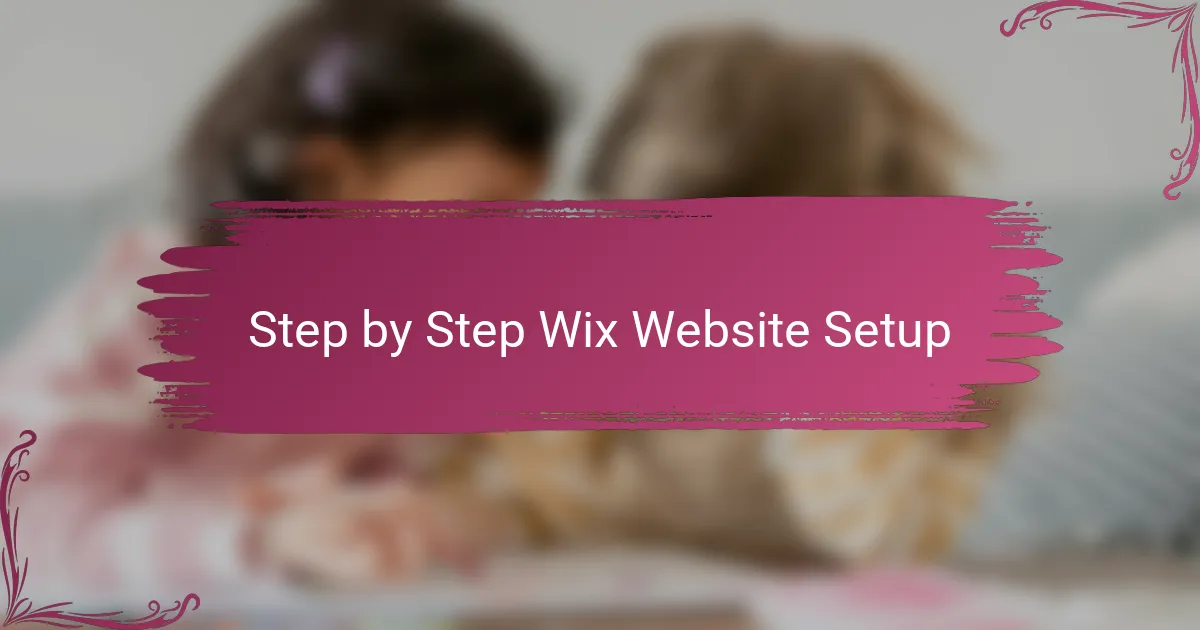
Step by Step Wix Website Setup
The first thing I did was sign up for a Wix account, and honestly, it felt so straightforward I almost expected a catch. Have you noticed how some platforms make the initial setup complicated? Wix was refreshingly different—it guided me step by step to pick a template that fit the vibe I wanted for my portfolio.
Next, I jumped into customizing the design. Dragging and dropping elements felt like playing with digital building blocks, and I found myself tweaking fonts and colors late into the night. It made me realize how powerful small design choices are in shaping the mood of a website—did I want it sleek and professional or more creative and bold?
Finally, adding my work wasn’t just about uploading images; it became a moment of reflection. Each project I added came with a story I wanted to share, and Wix’s intuitive editor made it easy to include descriptions, links, and even videos. It’s amazing how those few clicks turned into a personal space that felt truly mine.
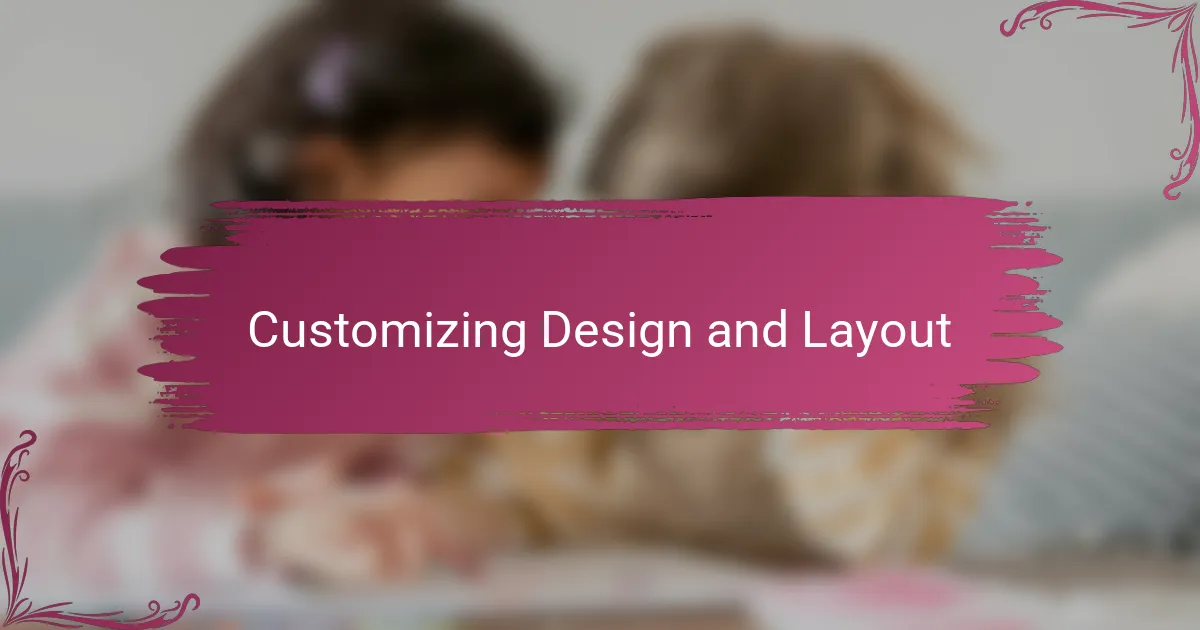
Customizing Design and Layout
Customizing the design and layout was where I really got to play with my creativity. Wix’s intuitive editor let me experiment with different font styles and color schemes until the site felt like a genuine extension of myself. Have you ever found that changing just one small design element can completely shift the vibe? That’s exactly what happened when I switched from a formal font to something more modern—it transformed the whole mood.
What struck me most was how flexible the layout options were. I could arrange sections to highlight my strongest projects upfront or create smooth navigation that felt natural. It made me realize that good design isn’t just about looking pretty; it’s about guiding visitors through your story effortlessly.
Sometimes, I got a little carried away tweaking details late at night, but each adjustment made the site feel more polished and intentional. I found that balancing creativity with simplicity was key—too many bells and whistles distracted from the work I wanted to showcase. Have you ever struggled to find that sweet spot in design? It’s a journey, but totally worth it.
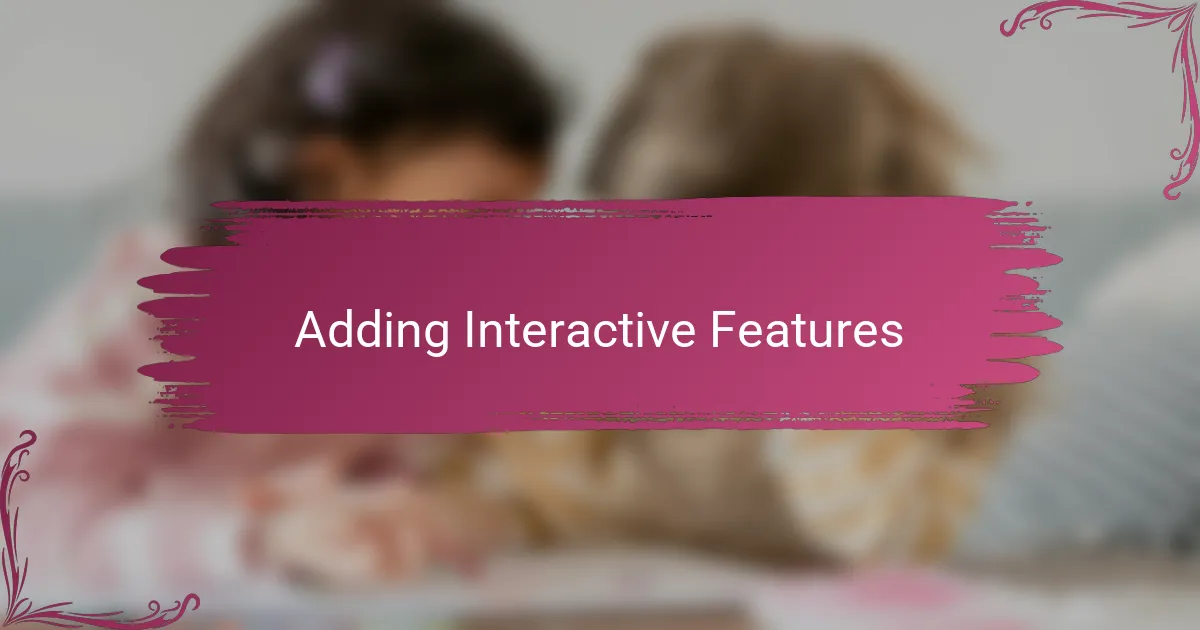
Adding Interactive Features
Adding interactive features to my portfolio site was the game-changer that turned a static showcase into an engaging experience. I remember hesitating at first—was it really necessary? But then I realized how elements like hover effects or clickable project thumbnails invite visitors to explore more deeply. Have you ever noticed how small interactions can make a website feel alive rather than just a digital flyer?
Wix made it surprisingly easy to add these dynamic touches without any coding. Using their built-in widgets, I added contact forms and social media buttons that encouraged visitors to reach out directly. It felt great knowing I was not only showing my work but also opening the door for real conversations and networking.
One feature I particularly enjoyed experimenting with was embedding videos to explain projects in my own voice. That personal touch added a whole new layer to my portfolio’s story. If you’ve ever wondered how to make your site stand out, giving visitors multiple ways to interact is a strategy worth trying—you’d be surprised how much it boosts engagement.
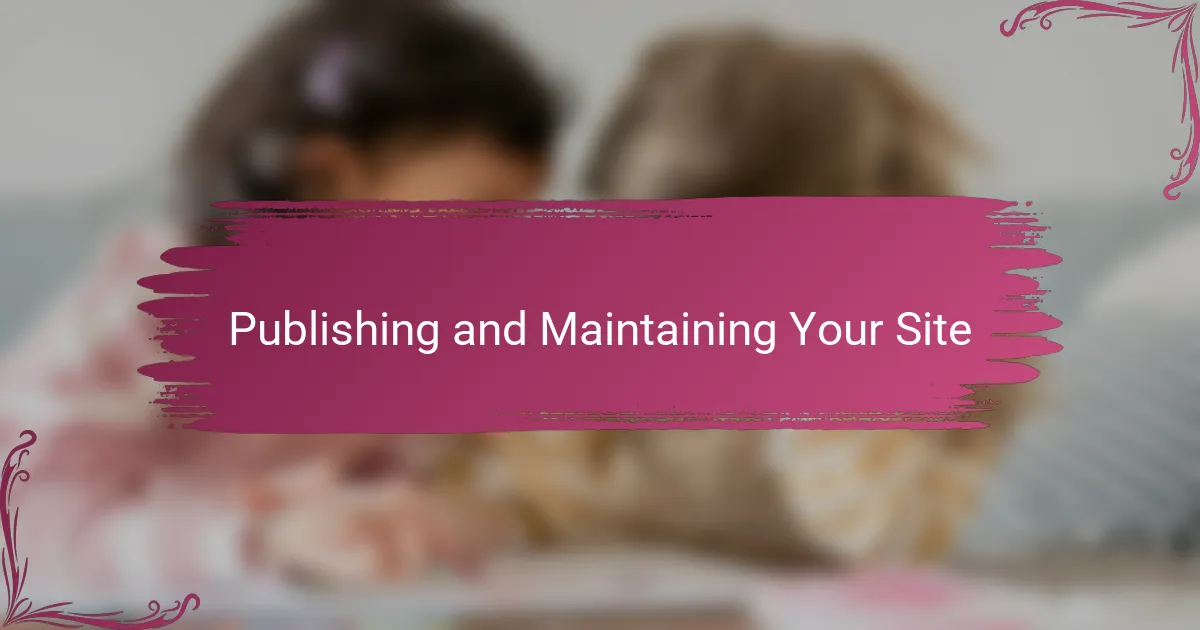
Publishing and Maintaining Your Site
Publishing my Wix portfolio felt like the moment of truth—clicking that “Publish” button was both thrilling and nerve-wracking. Have you ever hesitated right before putting something out for the world to see? That mix of excitement and vulnerability is part of what makes sharing your work so meaningful.
Once my site was live, I realized maintenance was just as important as the initial setup. I made it a habit to regularly update projects and tweak content based on feedback or new skills I’d developed. It’s like nurturing a living portfolio rather than letting it gather digital dust.
I also learned the importance of monitoring site performance through Wix’s analytics tools. Seeing how visitors interact with different pages helped me make informed decisions about what to highlight or improve. Have you checked your website’s stats before? It’s surprising how small changes informed by data can make a big difference.